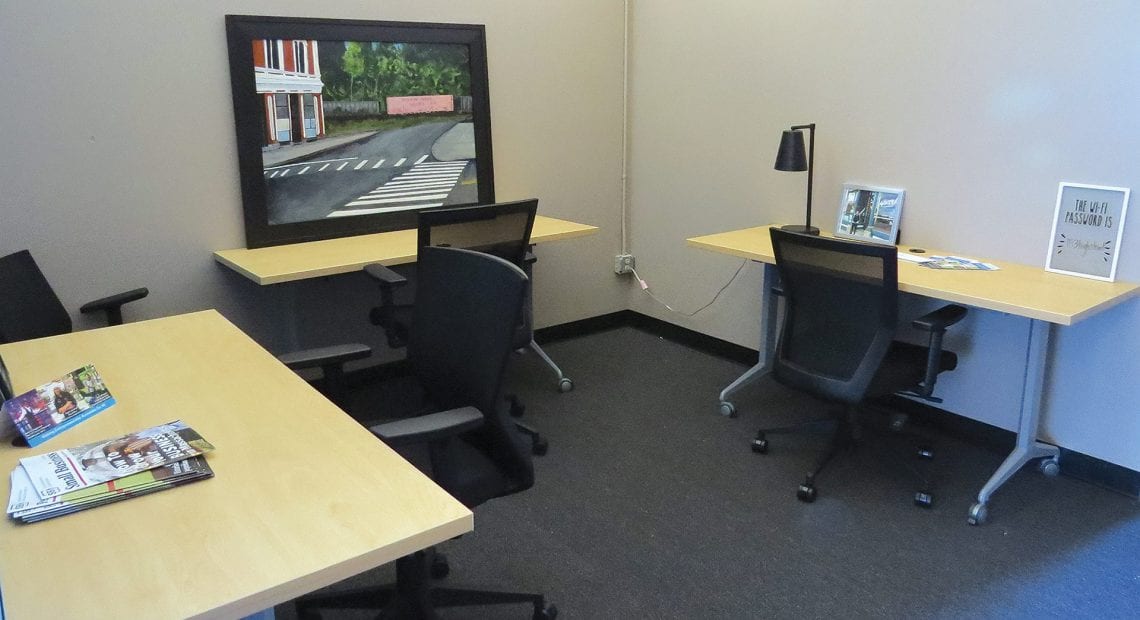Doing Their Home Work
While much of the national conversation around COVID-19 has centered around how prepared the government and healthcare sector are to deal with the pandemic, another sector has been asking itself similar preparedness questions.
That would be IT firms, especially those who handle the networks of business clients at a time when companies are sending employees home en masse — not to take time off, but to work remotely.
“We took the initiative on this last week,” said Jon Borges, president of JBit Solutions in Westfield. “Even if we had clients who did not have remote users, we went to all our clients and prepped them ahead of time with instructions: ‘if you do choose this, here’s what you need to do with their home PC, here’s what to do with your work PC.’ We support 600 to 800 desktops, so we have to get ready for this.”

Sean Hogan
Sean Hogan, president of Hogan Technology in Easthampton, has been similarly proactive, staying in regular contact with clients as the COVID-19 threat emerged. When the Centers for Disease Control and Prevention recommended avoiding gatherings of 50 of more people on Sunday — and President Trump topped that by discouraging groups of more than 10 the following day — businesses really got serious about keeping their workers away.
“When they gave that mandate, that changed everything. Companies have to give employees the ability to work remotely,” Hogan said — and he feels good about how his clients are taking on the challenge. “My IT team is cranking. I feel pretty good about it. We feel prepared, no panic at all, and we’re communicating constantly with our clients.”
He explained that cloud-voice and managed-IT clients are already configured to work successfully and securely from any remote location. “I also reached out to my other clients that are still operating in an on-premise platform. There are options for remote connectivity, but they do not have the flexibility of our cloud. The good news is that we can spin up our cloud instances very fast for our clients.”
Most of Hogan’s clients have already been migrated to Microsoft Office 365, which allows them to work seamlessly from home, collaborate, and have built-in videoconferencing, he added. “And we are offering webinars to help our clients embrace working remotely.”
In short, he and Borges, and plenty of others in the Pioneer Valley, are helping businesses of all kinds adjust to a new normal — one that, right now, offers no real timeline for when the old normal will return.
Hogan’s preparations for a week like this didn’t begin recently.
“Maybe we had a premonition,” he joked, “but we started moving clients to the cloud almost 10 years ago when nobody wanted to be in the cloud — when there was this fear factor, fear of the great unknown. But I’ve shifted my entire voice base to the cloud over the past eight years. The beauty is in explaining to clients what they have already. They don’t need to reinvent the wheel. They have the software in place for all their people to work remotely. They just have to remember how to do it.”
That, of course, is where the training, webinars, and other forms of communication come in.
“We were out there early on — we were an early adopter in this industry to promote cloud voice,” he added. “Why invest in equipment you have to be rotating every few years because it becomes obsolete? We’ve been on a quest to have zero obsolescence.”
Borges said many of his firm’s clients already have employees who work at least occasionally from home, so they have access, even if it might not be implemented throughout the whole company.
“Most clients are in networks of 10 users or more, and in those networks, firewalls act as a VPN [virtual private network],” he explained. “As long as they have that, it’s just a matter of how many licenses they need. To be honest, most of our holdup is just talking to clients and making sure what users should have access and make sure they have enough licenses. If we need to make an order, our vendors are getting bombarded, so it’s taking two or three days to come through.”
For smaller companies who don’t have that capability, Borges said, software like LogMeIn or GoToMyPC can be purchased. “Clients don’t need hardware — we will set them up on an app such as that.”
In any case, the most complicated element is training and initial setup. Once users are set up remotely, their home computer interface typically looks exactly like their work PC.
For IT professionals like JBit, clients run the gamut — in his case, encompassing insurance agencies, office settings, construction firms, wholesalers, cannabis dispensaries, and a host of others. In addition to remote access to desktops, Borges is helping clients navigate how to transfer VoIP phone connections to homes, set up meeting apps like RingCentral, and implement a number of other solutions.
“Most medium- to large-sized businesses should have hardware in place,” he added. “It’s a matter of getting licenses, educating staff, and rolling it out.”
The challenges of sending one’s entire workforce home can be both technical and non-technical, Hogan noted. “You have to deal with local wi-fi connections, which aren’t as secure as at work, and then you’ve got kids at home playing Fortnite,” he said, adding that part of this transition is setting expectations for what employees need to accomplish remotely and then establish some accountability, so they don’t get too distracted by the kids.
Remote work poses business-law issues as well, which is why Skoler, Abbott & Presser, P.C. will present a free webinar on Friday, March 20 from noon to 1 p.m. for employers to discuss how coronavirus COVID-19 is impacting the workplace. Registration is required by clicking here.
“COVID-19 is changing the way we live,” said John Gannon, a partner with the firm. “Schools are closing, travel is in flux, and events are being cancelled or postponed. Over the past few weeks, and in particular the last few days, we have received countless questions from employers about how coronavirus is affecting the workforce. Can employers send people home? Can they ask questions related to why employees are out? What about paying people who cannot come to work? Can or should they temporarily modify time off policies? Will there be a legislative measure calling for paid sick leave and/or unemployment expansion for those unemployed?”
The webinar will discuss the legal obligations of employers during a pandemic, as well as practical considerations and common-sense suggestions, and a lengthy Q & A session will follow, giving participants a chance to ask specific questions.
There’s no doubt that countless employers across the U.S. are asking those questions today, from mom-and-pop shops to the region’s largest employers, including MassMutual, which asked all employees who have the ability to work remotely to begin so earlier this week.
“We had already previously canceled non-essential domestic and international business travel and large-scale events, proactively tested our work from home capabilities, restricted non-essential guests at our facilities, and enhanced our cleaning protocols at our office, all of which continue,” Laura Crisco, head of Media Relations and Strategic Communications, told BusinessWest. “This is our latest effort to reduce the potential spread of this virus; protect the health of our employees, their families, and our community; and assure the continuity of our business operations.”
So, yes, the call to stay home affects the vast majority of industry sectors and companies of every size. Which is why Hogan and others in the IT world are so busy right now — even as much of his own staff is currently working remotely as well.
“My industry has changed so much,” he said. “But we understand the urgency; we understand the mission-critical applications that people need 24/7/365. We know how to prioritize clients — we run our call center like a medical triage — and we’re getting things done.”








